A retrospective study suggested that sodium-glucose cotransporter 2 (SGLT2) inhibitors may reduce the risk of cardiac and renal disease in patients with systemic lupus erythematous (SLE) and lupus nephritis (LN) as they do in type 2 diabetes, heart failure, and other conditions. Working with a cohort of 96,511 SLE patients with electronic health records, researchers identified 426 individuals prescribed SLGT2 inhibitors and 865 prescribed dipeptidyl peptidase 4 (DPP4) inhibitors between March 2013 and August 2021.

SGLT2 inhibitor use was associated with a lower risk of adverse cardiovascular outcomes (HR=0.74) and renal progression (HR=0.65) versus DPP4 use. A subset of patients with LN showed similar reduced risk for cardiovascular events (HR=0.55) and numerically lower risk of renal progression.
April Jorge, MD, Rheumatologist at Massachusetts General Hospital and Instructor in Medicine at Harvard Medical School, discussed the study during Plenary II on Monday. This session is available on demand for registered ACR Convergence 2023 participants through Oct. 31, 2024, on the meeting website.
“People with SLE and lupus nephritis have elevated risks of cardiovascular events and kidney failure,” Dr. Jorge said. “There is a huge unmet need for therapies to improve these outcomes. This is the first study using real-world data for patients with lupus and lupus nephritis using SLGT2 inhibitors. We found these medications lower the risk of major adverse cardiovascular events and of kidney disease progression. Prospective randomized clinical trials are needed to help identify patients with lupus most likely to benefit from SGLT2 inhibitors and the ideal timing for their use.”
Interplay of AHR and IFN regulate CXCL13 T cell differentiation in SLE

CXCL13+ T peripheral helper (Tph) cells are thought to be one of the primary pathogenic drivers in multiple autoimmune disease, including SLE. The origin of CXCL13 production and differentiation of Tph cells has been largely undefined. New data suggest the interplay between aryl hydrocarbon receptor (AHR) and type 1 interferon (IFN) regulates the differentiation of CXCL13+ Tph cells. This novel pathway may lead to new therapeutic biomarkers and therapeutic targets.
“In healthy individuals, T cells that produce CXCL13 are normally found in the lymph nodes, where they activate B cells,” said Calvin Law, PhD, Northwestern University Feinberg School of Medicine Robert H. Lurie Cancer Center. “In autoimmune diseases, CXCL13+ T cells can be found in the periphery, where they appear to recruit and activate B cells, driving inflammation.”
Mouse models of SLE or other autoimmune diseases could not be used because mouse T cells do not produce CXCL13, Dr. Law explained. Working with SLE patient tissue samples and primary T cells from healthy donors, researchers confirmed that the genetic or pharmacologic inhibition of AHR activation strongly induces CXCL13 production by Tph cells, while AHR activation inhibits CXCL13 production. At the same time, IFN, a pathogenic driver of SLE, promotes CXCL13 production at least in part by inhibiting AHR activation.
An AHR agonist, tapinarof, has been approved by the U.S. Food and Drug Administration (FDA) for psoriasis.
Gut microbiome transplantation protects mice from OA

Gut microbiome transplants from Murphy Roths large (MRL) mice that are resistant to post-traumatic osteoarthritis (OA) into B6 mice that are susceptible to OA protected the B6 mice from OA while reducing OARSI score, synovitis, and osteophytes. Gut microbiome transplants from OA-susceptible B6 mice into MRL mice rendered the MRL mice more susceptible to post-traumatic OA.
“OA is a disease of chronic, low-level systemic inflammation with components of malalignment and abnormal joint loading and damage,” said Matlock Jeffries, MD, FACP, FACR, Associate Professor of Arthritis & Clinical Immunology Research and Clinical Assistant Professor of Medicine, University of Oklahoma Health Sciences Center. “Unlike what so many of us were taught, OA is not a disease of wear and tear.”
Bone marrow transplantation does not confer OA protection, Dr. Jeffries continued. But diet can alter the microbiome and improves protection against post-traumatic OA in B6 mice, suggesting the gut microbiome plays a role.
B6 mice transplanted with diluted cecal contents from MRL mice showed similar OARSI histologic, synovitis, and osteophyte scores as OA-protected MRL mice. OA protection was conveyed to F1 progeny of B6-transplanted mice, but OA protection largely disappeared in the F2 generation.
“Gut microbiome transplantation is an effective therapeutic for these mice,” Dr. Jeffries said. “The big question is if microbiome transplantation is affecting the acute inflammatory phase or has something to do with regeneration later on. From the current data, it appears we are affecting the acute phase, but we are following these mice to see if there is some delayed regeneration, too.”
TNF inhibitors versus non-TNF inhibitor biologics or JAK inhibitors show no differences in respiratory outcomes in RA-ILD

A direct comparison of tumor necrosis factor (TNF) inhibitors and non-TNF inhibitor biologics/Janus kinase (JAK) inhibitors in patients with rheumatoid arthritis (RA) and interstitial lung disease (ILD) showed no difference in respiratory outcomes between the two groups of agents.
Analysis of national Veterans Health Administration patients with RA-ILD identified 237 patients who initiated TNF inhibitors between 2006 and 2018 who were propensity-score matched with 237 similar patients who initiated non-TNF inhibitor biologics or JAK inhibitors over the same period. The primary outcome was a composite of time to respiratory-related hospitalization or death.
“There have been concerns that people with RA-ILD who are treated with TNF inhibitors may have more exacerbation of their ILD or worse outcomes,” said Bryant England, MD, PhD, Associate Professor of Medicine in the Division of Rheumatology and Immunology at the University of Nebraska Medical Center. “But we don’t have any clinical trial data comparing these two immunosuppressive therapies in RA-ILD and very little observational data.”
Researchers found no significant differences in respiratory hospitalization, all-cause mortality, or respiratory-related mortality between the two approaches.
“Our evidence does not support avoiding TNF inhibitors in people who have RA-ILD,” Dr. England said. “This analysis contradicts what many clinicians believe and reinforces the need to obtain clinical trial data on different immunosuppressive therapies and RA-ILD.”
Splitting oral dose of methotrexate beats single dose in RA

What may be the first direct comparison of weekly single-dose methotrexate versus split-dosing found that splitting the weekly dose did not improve clinical outcomes in RA. Because methotrexate has limited bioavailability at oral doses above 15 mg, splitting larger doses can increase serum levels compared to single dose, but the clinical impact of split-dosing had not been investigated in RA.
A six-center, open-label study randomized 253 patients to split-dosing, morning and evening, versus the usual single dose of 25 mg of methotrexate once weekly for 24 weeks. Patients could add additional disease-modifying anti-rheumatic drug (DMARD) treatment as needed after 16 weeks of methotrexate monotherapy.
At week 16, patients in the split-dose group showed significantly lower DAS28 scores and improved EULAR good (12.3%), ACR20 (17.4%), ACR50 (19.5%), and ACR70 (11%) compared to the single-dose group, reported Varun Dhir, MD, MBBS, DM, Professor of Rheumatology, Postgraduate Institute of Medical Education and Research, India. Fewer patients in the split-dose group initiated additional DMARD treatment at 16 weeks, 35% versus 54.5%. But at 24 weeks, the primary endpoint, there was no significant difference in DAS28, EULAR good, or ACR scores.
“We think the difference in 16-week and 24-week results is a design-related issue and that we made an error in choosing the primary endpoint,” Dr. Dhir said. “That was affected by the number of patients who added another DMARD, which was nearly 20% higher in the single dose group. There was no significant difference in adverse events between the two groups.”
TMP-SMX prophylaxis may reduce infections during GPA treatment

A large population-based study of patients with granulomatosis with polyangiitis (GPA) treated with rituximab found that patients on trimethoprim sulfamethoxazole (TMP-SMX) prophylaxis have half as many serious infections as those not taking prophylaxis (HR=0.49). TMP-SMX prophylaxis was also associated with reduced outpatient visits for infection over a follow-up period of almost 500 days (HR=0.68).
GPA is one of the most common forms of antineutrophilic cytoplasmic antibody (ANCA)-associated vasculitis (AAV) in North America, and serious forms are often treated with rituximab, said Arielle Mendel, MD, MSc, Assistant Professor of Rheumatology, McGill University Health Center, Canada. Infections are the single largest contributor to AAV mortality during the first years after diagnosis. TMP-SMX prophylaxis is already recommended during GPA treatment for prevention of Pneumocystis jirovecii pneumonia, but this infection is rare.
“Across observational studies, about a quarter of patients experience a serious infection requiring admission to hospital,” Dr. Mendel said. “We used administrative data to identify those who did or did not receive TMP-SMX within 30 days of rituximab treatment for GPA between 2011 and 2020 and followed them for the development of serious infections or outpatient infection.”
Researchers used Merative Marketscan research databases to identify adults with GPA taking rituximab with one or more claims for inpatient GPA claims or two or more outpatient GPA claims across the United States. A total of 919 patients were included in the analysis.
“TMP-SMX was associated with fewer infections,” Dr. Mendel said. “We need further study to determine for how long prophylaxis is needed, especially for those on long-term rituximab treatment.”
Don’t Miss a Session

If you weren’t able to make it to a live session during ACR Convergence 2025 — or you want to revisit a session from the annual meeting — make plans to watch the replay. All registered participants receive on-demand access to scientific sessions after the meeting through October 31, 2026.
